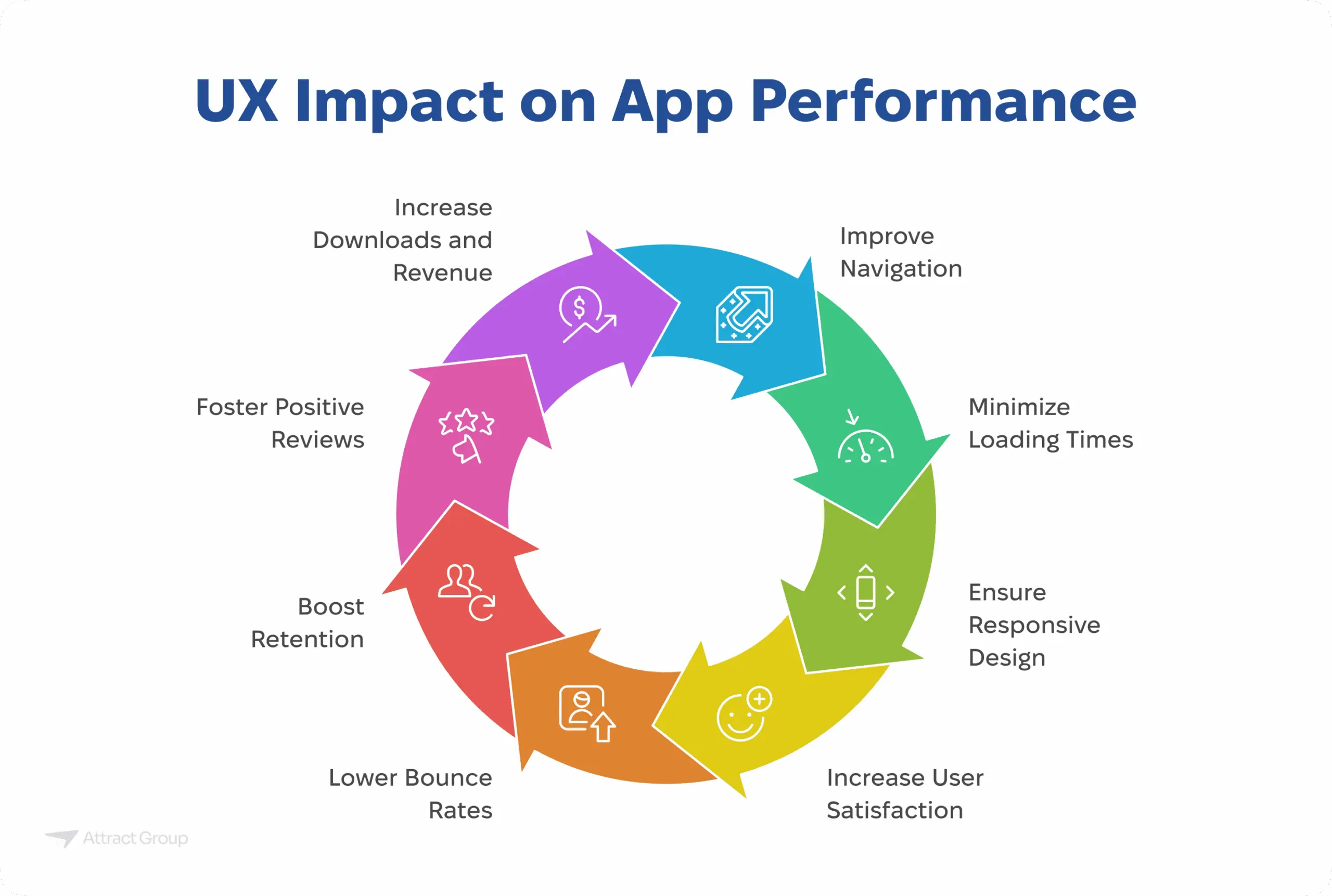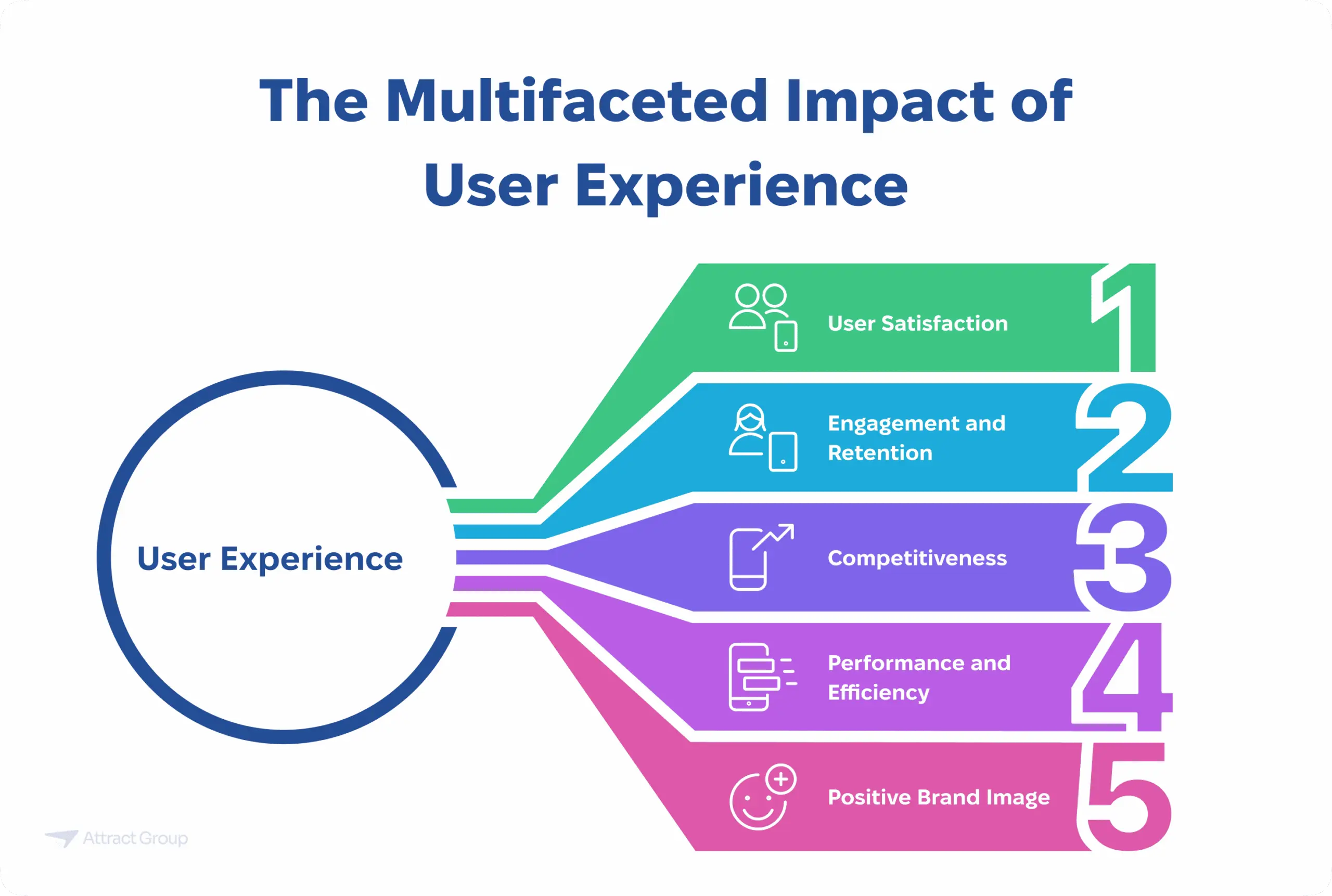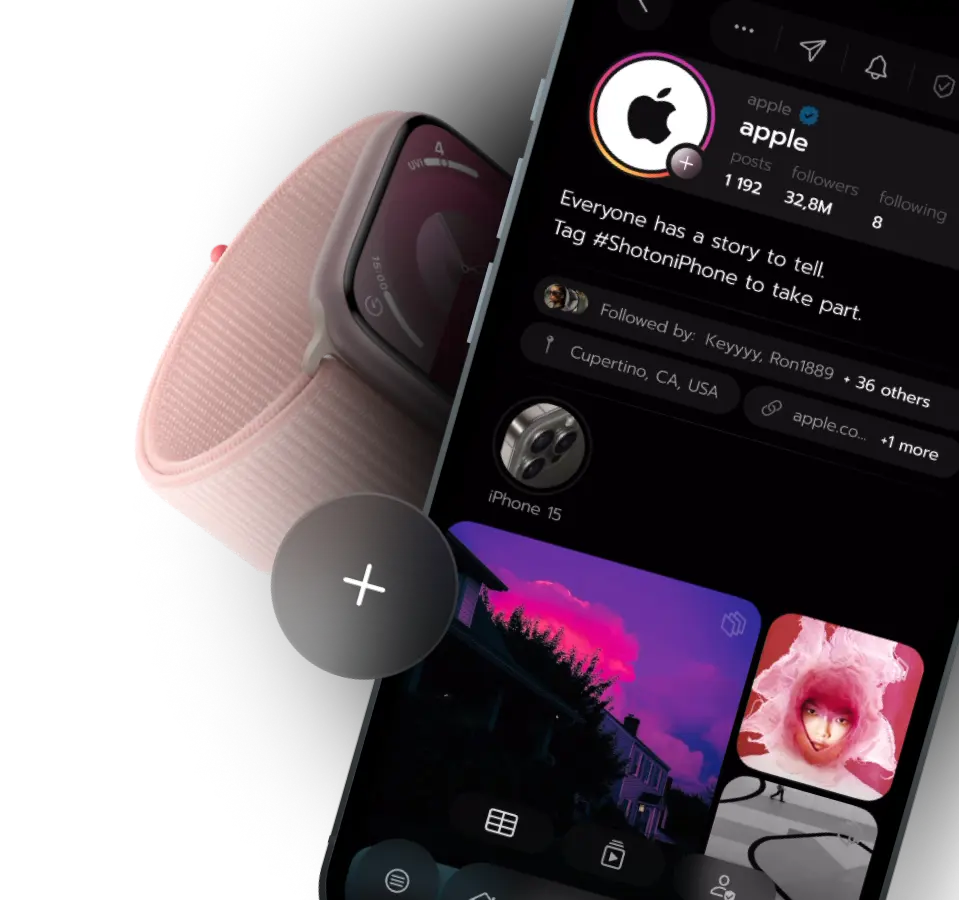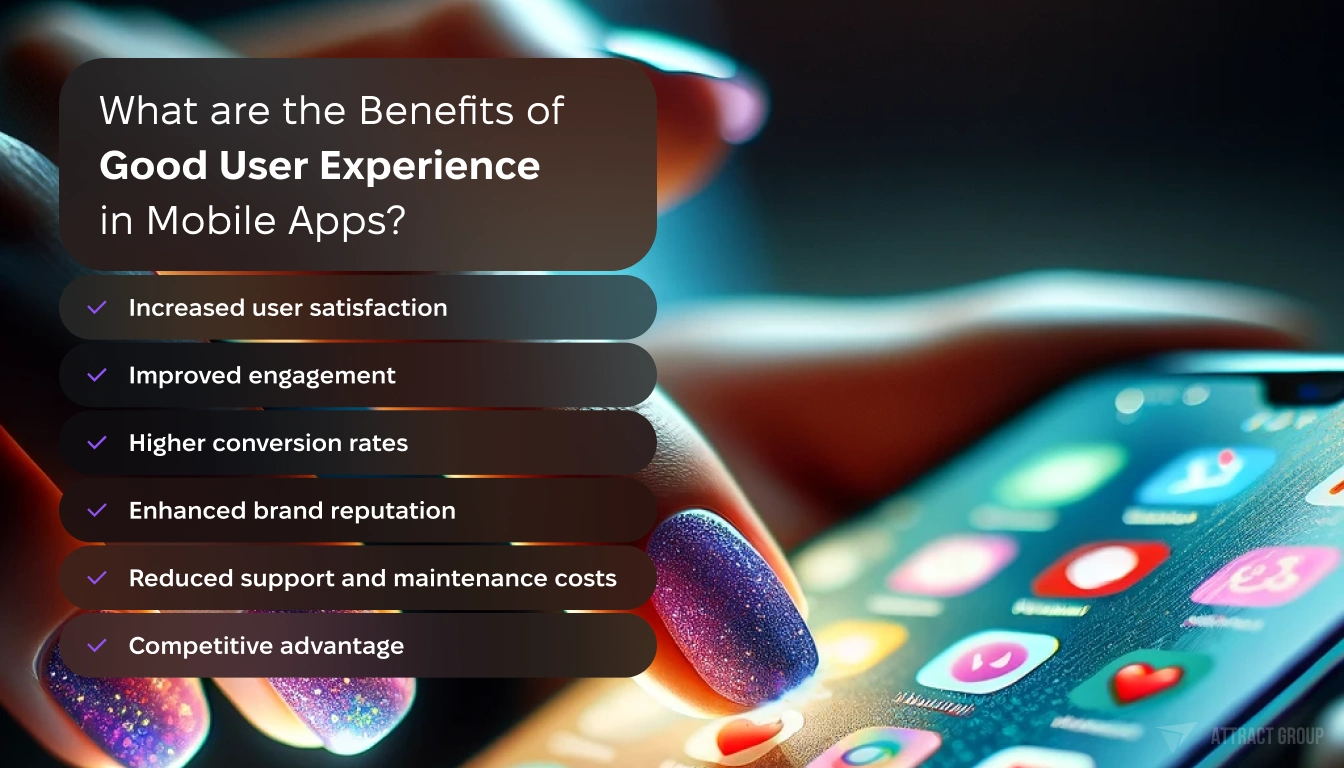The Importance of User Experience (UX) in Mobile App Development
 15 September 2023
15 September 2023User experience (UX) plays a critical role in the success of mobile app development. In today’s digital landscape, where mobile apps are ubiquitous, creating a seamless and enjoyable user experience is paramount.
Understanding the concept of UX is crucial. UX refers to the overall experience that a user has while interacting with a mobile app, encompassing factors such as ease of use, efficiency, and satisfaction. Implementing good UX practices is essential because it directly influences user engagement, retention, and overall app success.
To delve deeper into the importance of UX in mobile app development, it is vital to explore its impact on app performance. A well-designed UX enhances app performance by improving navigation, minimizing loading times, and ensuring responsive and intuitive design. This translates into better user satisfaction, lower bounce rates, and increased retention.
The benefits of good UX in mobile apps are significant. A seamless and intuitive user experience fosters higher customer satisfaction, encourages positive reviews and recommendations, and boosts app downloads and revenue. User-centric design is essential, and incorporating effective UX best practices can differentiate your app from the competition.

Case studies of successful mobile apps with excellent UX further validate its importance. Examining real-world examples can provide invaluable insights into UX strategies that contribute to high user engagement, positive feedback, and app success. In mobile app development, adhering to established principles and best practices for mobile UX design is essential.
Understanding the mobile user, implementing responsive and intuitive design, streamlining navigation, optimizing performance, leveraging visuals and multimedia effectively, and considering accessibility and inclusivity are key factors for creating a compelling UX. User testing and gathering feedback are integral components of UX design. Usability testing allows app developers to evaluate the effectiveness of their design choices and make necessary improvements based on user feedback. Iterative design and continuous improvement ensure that the app evolves to meet users’ changing needs and preferences.
UX designers play a crucial role in mobile app development. With key skills in UX design, they collaborate with developers and stakeholders to ensure a user-centric approach. Integrating UX with user interface (UI) design is vital, as it ensures a visually appealing and cohesive app experience.

Key takeaway:
- The Importance of User Experience in Mobile App Development: User experience plays a crucial role in the success of mobile apps. It directly impacts app performance, user satisfaction, and overall app quality.
- Understanding User Experience in Mobile Apps: User experience refers to how users perceive and interact with a mobile app. It encompasses usability, accessibility, responsiveness, and overall design aesthetics.
- The Role of User Experience in Mobile App Success: Good user experience leads to enhanced app performance, higher user satisfaction, increased user engagement, and improved conversion rates. It is a key factor in retaining and attracting users.
The Importance of User Experience in Mobile App Development
User experience (UX) plays a crucial role in the development of mobile apps. It holds immense importance as it greatly influences the success and popularity of an app among users. There are several reasons why user experience is crucial in mobile app development:
| Reason | Explanation |
|---|---|
| Enhanced satisfaction | A seamless and intuitive user experience creates a positive impression on users and increases their overall satisfaction. |
| Increased engagement | A well-designed mobile app with a user-friendly interface encourages users to spend more time on the app, leading to increased user engagement. This allows businesses to capture and retain the attention of their target audience. |
| Improved retention | Apps with a great user experience are more likely to be used repeatedly by users. When an app provides value, meets user expectations, and delivers a smooth and enjoyable experience, users are more inclined to continue using it, resulting in improved user retention. |
| Competitive advantage | In a highly competitive app market, user experience can be a differentiating factor. A well-designed app that focuses on delivering a superior user experience can stand out from the competition and attract more users. |
| Positive brand perception | A positive user experience contributes to the overall brand perception. When users have a pleasant experience using an app, they associate it with the brand, leading to a positive brand image and increased trust and loyalty. |
To ensure a great user experience in mobile app development, it is important to conduct thorough user research, design a user-centered interface, prioritize usability, and continually gather user feedback to make necessary improvements. By prioritizing user experience, developers can create apps that not only meet users’ needs and expectations but also leave a lasting impression.
Understanding User Experience in Mobile Apps
Understanding user experience in mobile apps is crucial for creating successful and user-friendly mobile applications. Here are important aspects to consider:
- Ease of navigation: Mobile apps should have intuitive and user-friendly navigation to ensure that users can easily find and access the features they need.
- Responsive design: Mobile apps should be designed with responsiveness in mind, adapting to different screen sizes and orientations for a seamless user experience across devices.
- Loading speed: Users expect fast-loading apps, so optimizing the loading time of the app and its content is essential to avoid user frustration.
- Visual appeal: A visually appealing and aesthetically pleasing design can enhance user engagement and satisfaction. Using appropriate colors, fonts, and imagery can create a positive user experience.
- Effective use of space: Mobile screens have limited space, so it is crucial to prioritize and display only relevant information. Avoid clutter and ensure that content is easily readable and accessible.
- Consistency: Maintaining consistency in the app’s design, layout, and functionality, such as using standard icons and familiar navigation patterns, helps users feel comfortable and confident in using the app.
- Clear feedback: Providing feedback, such as animations or notifications, when actions are performed, helps users understand that their interactions are registered, boosting their confidence in the app.
- Accessibility: Mobile apps should be accessible to users with disabilities, ensuring that features like font size customization, voice commands, and compatibility with assistive technologies are incorporated.
- Regular updates and bug fixes: Continuous improvement and bug fixes are essential to address user feedback, implement new features, and enhance the overall user experience.

What is User Experience?
User experience (UX) refers to the overall experience that a user has when interacting with a mobile app, website, or any digital product. It encompasses every aspect of the user’s interaction, including their emotions, attitudes, and behaviors. What is User Experience? The goal of UX design is to create a seamless and intuitive experience that meets the user’s needs and expectations.
In mobile app development, user experience plays a crucial role in determining the success of an app. A well-designed app with a positive user experience can significantly increase user engagement, retention, and satisfaction. On the other hand, a poorly designed app with a negative user experience can lead to user frustration, abandonment, and negative reviews.
To ensure a good user experience, developers need to prioritize factors such as responsiveness, intuitive design, streamlined navigation, and optimized performance. They should also consider accessibility and inclusivity to cater to a diverse range of users.
User experience is a critical aspect of mobile app development that directly impacts the app’s performance and success. By understanding and prioritizing user needs and preferences, developers can create mobile apps that deliver exceptional user experiences and drive user satisfaction.
History has witnessed numerous successful mobile apps that have gained immense popularity due to their excellent user experience. One such example is Instagram, which revolutionized the way people share photos and connect with others. The app’s simple and intuitive interface, coupled with its powerful editing and sharing features, made it the go-to platform for visual storytelling. Instagram’s focus on user experience and continual improvement has contributed to its global success and millions of active users worldwide. This success story highlights the importance of user experience in mobile app development and its impact on user engagement and adoption.
Why is User Experience Important in Mobile App Development?
User experience is crucial in mobile app development because it directly impacts the success and performance of the app. A well-designed app that offers a positive user experience can significantly enhance customer satisfaction and engagement.
1. User satisfaction: When users have a seamless and enjoyable experience while using an app, they are more likely to be satisfied with the product. This satisfaction can lead to increased user retention and loyalty.
2. Engagement and retention: Good user experience encourages users to spend more time on the app, exploring its features and functionalities. This increased engagement can help retain users and reduce churn rates.

3. Competitiveness: In a highly competitive app market, a superior user experience can give an app a competitive edge. Users are more likely to choose an app that is user-friendly, visually appealing, and intuitive to navigate.
4. Performance and efficiency: User experience directly affects app performance. Users expect apps to be fast, responsive, and function smoothly. A well-designed user interface and optimized performance can enhance app functionality and responsiveness.
5. Positive brand image: A well-designed and user-friendly app reflects positively on the brand behind it. It conveys a sense of professionalism, attention to detail, and customer-oriented approach, which can enhance the brand’s reputation.
By prioritizing user experience in mobile app development, developers can create apps that not only meet user expectations but also stand out in the competitive market. The importance of user experience cannot be overstated as it directly impacts user satisfaction, engagement, app performance, and overall brand perception.
Discover how custom solutions can take your mobile app’s user experience to the next level. Our experts are ready to help you create an exceptional app.

The Role of User Experience in Mobile App Success
User experience plays a pivotal role in the success of a mobile app. It directly affects user satisfaction, engagement, and conversion rates, making it a crucial factor. A well-designed and intuitive user interface contributes significantly to the overall experience, ultimately leading to higher user retention and positive reviews. When users find an app easy to navigate and understand, they are more inclined to spend time on it and even recommend it to others.

Extensive studies have demonstrated that if a mobile app is difficult to use, 79% of users are likely to abandon it. This statistic highlights the importance of a seamless user experience. Developers should focus their attention on user experience as it can enhance app performance, minimize errors, and streamline processes. By doing so, user satisfaction is greatly increased, resulting in frequent usage.
To cultivate a positive user experience, app developers should pay close attention to factors such as load times, responsiveness, accessibility, and visual appeal. It is crucial to gather feedback from users and continually iterate to address their specific needs and preferences. This iterative process plays a significant role in refining the user experience and ultimately contributing to the success of the app.
In summary, the role of user experience in mobile app success cannot be underestimated. By prioritizing and optimizing the user experience, developers can create apps that not only provide enjoyment to users but also offer value and are worthy of recommendation.
How Does User Experience Impact App Performance?
User experience plays a crucial role in determining app performance. To understand how user experience impacts app performance, it is essential to consider a well-designed user interface that offers a smooth and intuitive experience. Such an interface not only enhances user engagement but also improves user satisfaction. When users find an app easy to navigate and interact with, they are more likely to have a positive experience and explore its features. This increased user engagement ultimately boosts app performance.
One of the key ways user experience affects app performance is through its direct impact on app download and retention rates. If users encounter difficulties or frustrations while using an app, they are more likely to uninstall it and search for alternatives. On the other hand, a positive user experience cultivates loyalty and encourages users to continue using the app.
Furthermore, the loading speed and overall performance of an app can be greatly influenced by user experience. If an app is poorly optimized, resulting in long loading times or frequent crashes, it will undoubtedly leave users dissatisfied, and they may ultimately abandon it. On the contrary, an app that prioritizes performance by optimizing loading times and providing a smooth experience contributes to a positive user experience and ensures better app performance.
Hence, it is evident that user experience has a significant impact on app performance. By focusing on creating a user-friendly interface, enhancing engagement, and optimizing performance, app developers can effectively ensure that their app performs well and meets the expectations of users.
What are the Benefits of Good User Experience in Mobile Apps?

What are the Benefits of Good User Experience in Mobile Apps? The benefits of good user experience in mobile apps are numerous and can greatly enhance the overall success and usability of the app.
- Increased user satisfaction: When users have a positive experience while using a mobile app, they are more likely to be satisfied with the app and continue using it. This can lead to higher user retention rates and increased customer loyalty.
- Improved engagement: Good user experience can make the app more engaging and enjoyable to use. This can result in increased user interaction, longer app session durations, and higher levels of user involvement.
- Higher conversion rates: A well-designed and user-friendly app can improve conversion rates by guiding users through the desired actions or transactions more effectively. This can lead to higher sales, subscriptions, or other desired outcomes.
- Enhanced brand reputation: A mobile app with a great user experience reflects positively on the brand or company behind it. Users are more likely to have a favorable impression of the brand and recommend the app to others, which can contribute to the brand’s reputation and credibility.
- Reduced support and maintenance costs: Good user experience can help minimize user confusion and frustration, resulting in fewer support inquiries and lower maintenance costs. App features that are intuitive and easy to use require less explanation and troubleshooting.
- Competitive advantage: In today’s saturated app market, a well-designed and user-friendly app can give a competitive edge. When users have a positive experience with an app, they are more likely to choose it over similar alternatives.
To ensure a good user experience in mobile apps, it is important to conduct user research, employ intuitive design principles, offer seamless navigation, optimize app performance, use visuals effectively, and prioritize accessibility. Regular user testing and feedback collection can help identify areas for improvement and ensure continuous enhancement of the user experience.
Case Studies: Successful Mobile Apps with Excellent User Experience
Here are some case studies of successful mobile apps that have excellent user experiences:
- Spotify: With its user-friendly interface, personalized music recommendations, and seamless navigation, Spotify stands out as one of the most popular music streaming apps. It offers a smooth and enjoyable user experience, allowing users to easily discover, create, and share their favorite music playlists.
- Instagram: Renowned for its visually appealing design and intuitive features, Instagram has completely transformed the way we share photos and videos. This app provides a seamless browsing experience, enabling users to effortlessly scroll through their feeds, engage with content, and explore new accounts.
- Uber: By revolutionizing the transportation industry with its user-friendly app, Uber has carved a niche for itself. Its simple and efficient interface allows users to easily request rides, track their driver’s location, and make payments for their trips. The app enhances convenience and efficiency, resulting in a positive user experience.
- Headspace: Considered a meditation and mindfulness app, Headspace offers a serene and calming user experience. It boasts a visually appealing design and guided meditation sessions, aiding users in relieving stress, improving focus, and cultivating a sense of well-being. It exemplifies how mobile apps can contribute to mental well-being.
These case studies showcase the importance of providing an excellent user experience in mobile apps. By understanding user needs and preferences, incorporating intuitive design principles, and leveraging innovative features, these apps have successfully captured the attention and loyalty of millions of users.
Let us help you optimize your app’s UX for a better user experience. Contact us to create a seamless and engaging app design.
Principles and Best Practices for Mobile User Experience Design
Designing a great user experience for mobile apps is vital in today’s digital landscape. In this section, we’ll explore the principles and best practices for mobile user experience design. We’ll dive into understanding the needs and behavior of mobile users, creating responsive and intuitive designs, streamlining navigation and information architecture, optimizing performance and loading times, incorporating effective visuals and multimedia, and ensuring accessibility and inclusivity in mobile app design. Get ready to discover the secrets to creating a stellar mobile user experience that keeps users engaged and delighted.

1. Understanding the Mobile User
Understanding the mobile user is crucial in mobile app development, as it allows developers to create an optimal user experience. By gathering insights into how mobile users interact with apps, developers can make informed design decisions and create a user-friendly interface.
To comprehend the mobile user, developers should take into account factors such as their behavior, preferences, and device limitations. By analyzing data on usage patterns and conducting user research, developers can gain valuable insights into how users navigate through apps, what features they find most useful, and what challenges they may encounter.
Developers can also consider the mobile user’s context, such as their location, environment, and the tasks they want to accomplish. This comprehension aids in designing apps that are tailored to the specific needs and expectations of mobile users.
To enhance the mobile user experience, developers should prioritize responsive and intuitive design. This involves creating interfaces that are easy to navigate, with clear and concise instructions. By optimizing performance and loading times, developers can ensure that the app is fast and responsive, minimizing user frustration.
Understanding the mobile user is crucial in mobile app development. By gaining insights into user behavior, preferences, and context, developers can create apps that meet the specific needs of mobile users and provide an excellent user experience.
2. Responsive and Intuitive Design
When it comes to mobile app design, incorporating responsive and intuitive design is crucial for ensuring a seamless user experience. Here are some key aspects to consider:
- Screen Adaptability: A responsive design ensures that the app adapts to different screen sizes and orientations. This allows users to comfortably navigate and interact with the app on various devices, such as smartphones and tablets.
- Intuitive Navigation: By incorporating an intuitive design, you can provide logical and user-friendly navigation elements, making it easy for users to find what they need and smoothly move between different sections of the app. Clear labels, intuitive icons, and consistent placement of navigation controls enhance the user experience.
- Efficient Interactions: The goal of responsive and intuitive design is to minimize user effort by providing efficient interactions. This involves reducing the number of steps required to complete tasks and optimizing input methods, such as utilizing touch gestures or voice commands.
- Visual Consistency: Achieving consistency in visual elements, such as color schemes, typography, and iconography, is crucial for enhancing the usability of the app. A cohesive and familiar visual design creates a sense of reliability and facilitates users’ understanding and interaction with the app.

A recent study highlighted that 94% of users mentioned design-related reasons for mistrusting or rejecting an app. Hence, investing in responsive and intuitive design is absolutely essential for attracting and retaining users, increasing app engagement, and ultimately driving the success of a mobile app.
3. Streamlined Navigation and Information Architecture
When it comes to mobile app design, streamlined navigation and information architecture are crucial for providing users with a smooth and intuitive experience. Here are some key considerations:
- Clear and Consistent Menu: A well-designed app should have a clearly visible and easily accessible menu that allows users to navigate through different sections or features of the app.
- Logical Information Hierarchy: It is important to organize information in a logical and hierarchical manner, ensuring that the most important and frequently accessed information is easily discoverable. This helps users find what they need quickly and efficiently.
- Intuitive Search Functionality: Implementing a user-friendly search feature enables users to find specific information or items within the app easily. The search functionality should provide relevant and accurate results.
- Minimalistic Design: A clutter-free and minimalist design enhances the navigation experience by reducing distractions and allowing users to focus on the primary content or functionality. Use clear labels and icons to guide users.
- Effective Use of Visual Cues: Utilize visual cues such as buttons, icons, and color schemes to guide users through different sections or actions within the app. Consistency in design elements helps users understand and predict how to navigate.
- Accessible Information: Ensure that all information is easily readable, with appropriate font sizes, colors, and contrast. Consider the needs of users with visual impairments or other accessibility requirements.
- Efficient Backward Navigation: Provide users with an easy way to retrace their steps or go back to a previous screen. This can be achieved through a clearly visible “back” button or gesture.
By incorporating streamlined navigation and information architecture, mobile apps can offer users a seamless navigation experience and efficient access to information, enhancing overall user satisfaction and engagement.

4. Optimized Performance and Loading Times
To ensure a seamless user experience in mobile apps, optimized performance and loading times are crucial. There are several important considerations that can help achieve optimal performance:
- Efficient coding: Writing clean and efficient code is essential. It helps reduce the size of the app, resulting in faster loading times and smoother performance.
- Minimize network requests: To improve loading times and minimize data transfer, it is important to reduce the number of API calls and network requests. Whenever possible, combine multiple requests.
- Caching: Implement caching mechanisms to store frequently accessed data locally on the device. This reduces the need for repeated network requests and significantly improves loading times.
- Image optimization: Optimize and compress images used in the app to reduce file sizes without compromising visual quality. This is especially important for apps that heavily rely on images and significantly enhances loading times.
- Lazy loading: Instead of loading everything upfront, load content and resources on-demand as users interact with the app. This prioritizes essential content and greatly enhances loading times.
- Asynchronous operations: Perform time-consuming tasks, such as data fetching or processing, in the background asynchronously. This prevents blocking the user interface and ensures a smooth user experience.
- App size management: Regularly review and remove unnecessary code, resources, or features that are not frequently used to keep the overall app size in check. This greatly reduces download and update times.
- Testing and optimization: Regularly test the app on different devices and network conditions to identify performance bottlenecks. Utilize debugging tools and performance profiling to optimize code and further improve loading times.
Prioritizing optimized performance and loading times enables mobile apps to deliver a fast and responsive experience to users, resulting in increased user satisfaction and engagement.
5. Effective Use of Visuals and Multimedia
The strategic utilization of visuals and multimedia in mobile app design is essential for crafting a captivating and unforgettable user experience. By seamlessly integrating these elements, app developers can captivate the attention of users and effectively convey information in a way that is visually appealing and interactive.
| Enhanced User Engagement | Visuals and multimedia elements such as images, videos, and animations have the ability to grasp users’ attention and maintain their involvement with the app. By creating designs that are visually appealing and integrating interactive multimedia features, developers can enhance the immersive and enjoyable nature of the user experience. |
| Improved Information Delivery | Visuals and multimedia are highly effective in transmitting complex information in a concise and easily understandable manner. By incorporating infographics, charts, and visual cues, developers can present data and content in a visually appealing and digestible format, consequently enhancing user comprehension and retention. |
| Enhanced Aesthetic Appeal | Visuals and multimedia elements bring an added layer of visual polish and aesthetic appeal to the app. By integrating high-quality images, well-designed icons, and visually pleasing animations, developers can create an app that stands out and leaves a lasting impression on users. |
| Increased Brand Recognition | Through the incorporation of consistent visual elements and multimedia that align with a brand’s identity, developers can bolster brand recognition and develop a cohesive and memorable user experience. This aids users in associating the app with the brand, ultimately improving user loyalty and engagement. |
| Support for Different Learning Styles | Visuals and multimedia can cater to a variety of learning styles and preferences. Some users may prefer receiving information through visual or auditory means rather than text-based content. By providing a range of multimedia options, developers can accommodate diverse user preferences and enhance overall user satisfaction. |
The effective use of visuals and multimedia in mobile app design enhances user engagement, improves information delivery, increases aesthetic appeal, strengthens brand recognition, and supports different learning styles. By placing emphasis on these elements during the app development process, developers can create a visually appealing and engaging user experience that resonates with users and distinguishes their app from the competition.
6. Accessibility and Inclusivity in Mobile App Design
Accessibility and inclusivity are of utmost importance in mobile app design, as they are instrumental in ensuring that all users can effectively access and interact with the app. It is crucial to prioritize these aspects to create an inclusive experience that caters to everyone’s needs.

When designing a mobile app, it is essential to consider the diverse needs of users, especially those with disabilities such as visual or hearing impairments. To cater to different needs, incorporate features like adjustable font sizes, high contrast modes, and captioning for videos.
Not all users may be able to interact with the app using conventional methods, so it is important to provide alternative input options like voice commands or gesture-based controls. This will make the app accessible to a wider range of users.
Compatibility with assistive technologies such as screen readers or braille displays is vital for users with disabilities. Design the app in a way that is compatible with these technologies, ensuring that all content and functionalities are accessible to users relying on assistive tools.
To make the app inclusive to users from different regions, offer language options and ensure localization support. This includes not only translating the content but also considering cultural differences and design elements relevant to specific communities.
Regular accessibility testing is necessary to identify and address any usability barriers. Engaging users with disabilities in the testing process and addressing their feedback will improve the overall accessibility of the app.
By prioritizing accessibility and inclusivity in mobile app design, developers can ensure equal opportunities for a diverse range of users to engage with the app’s features and functionalities.
Mobile App User Experience Testing and Feedback
When it comes to mobile app development, user experience is everything. In this section, we’ll dive into the key element of mobile app user experience: testing and feedback. We’ll explore why usability testing is crucial for mobile apps and how it helps in improving overall user satisfaction. We’ll discuss effective methods for gathering valuable user feedback and how an iterative design approach leads to continuous improvement. Get ready to level up your app’s user experience game!
Importance of Usability Testing for Mobile Apps
Usability testing for mobile apps holds great importance in ensuring a positive user experience. The importance of usability testing for mobile apps lies in its ability to uncover potential barriers and challenges that users may face while engaging with the app. Through this testing process, the functionality and usability of the app can be evaluated, leading to valuable insights for improvement.
During usability testing, real users are given specific tasks to perform on the app, allowing developers to observe how they interact with it. This enables the identification of any usability issues or areas that require enhancement. By watching users navigate through the app and noting their feedback, developers can gain a deeper understanding of how well the app meets user expectations and addresses their needs.
Implementing usability testing during the development process reduces the risk of developing an app that fails to meet user expectations. It allows for early detection and resolution of issues, ultimately saving time and resources. By prioritizing and incorporating user feedback, developers can ensure that the app provides a seamless and intuitive experience, leading to higher app adoption and user retention.

Usability testing plays a vital role in mobile app development by highlighting areas for improvement, enabling developers to create apps that deliver a high standard of usability and enhance the overall user experience.
Methods for Gathering User Feedback
When it comes to mobile app development, methods for gathering user feedback are vital. They play a crucial role in improving the user experience and overall success of the app.
- By conducting surveys and questionnaires, app developers have the opportunity to gather feedback from a large number of users. These feedback-gathering methods allow for tailored questions on specific aspects of the app, including usability, features, and satisfaction levels.
- User interviews are another effective approach. By directly speaking with users, developers can gain valuable insights into their experiences, preferences, and pain points. This qualitative feedback uncovers specific issues that may not be easily apparent through other means.
- App analytics tools provide quantitative data on user behavior within the app. They track how users interact with the features and help identify areas for improvement. Additionally, they measure the overall success of updates or changes.
- Beta testing programs involve inviting a select group of users to test a pre-release version of the app. This allows developers to gather real-time feedback on usability, performance, and any bugs or issues that may arise.
- In-app feedback and reviews are also beneficial. By including a feedback feature within the app, users can directly share their thoughts and suggestions. Monitoring and responding to app store reviews also provide valuable feedback, helping address any concerns or issues raised by users.
Some facts (according to Smallbizgenius):
- 88% of online shoppers say they wouldn’t return to a website after having a bad user experience.
- 70% of online businesses that fail do so because of bad usability.
- Only 55% of companies currently conduct any UX testing.
- You are 279.64 times more likely to climb Mt. Everest than click on a banner ad.
- 53% of mobile site visitors leave a page that takes longer than three seconds to load.
- People form 75% of their judgment on a website’s credibility purely on its aesthetics.
- Bad mobile optimization annoys 48% of users.

Iterative Design and Continuous Improvement
Iterative Design and Continuous Improvement are crucial elements in mobile app development to guarantee an exceptional user experience. By consistently refining and enhancing the app based on user feedback and data, developers can create a more intuitive and user-friendly interface.
During the iterative design process, multiple design iterations are carried out, allowing developers to test and gather feedback from users. This iterative approach enables the identification and correction of any usability issues or design flaws. By making incremental improvements based on real user input, the app can become more user-centric and meet the needs and expectations of its target audience.
Continuous improvement involves analyzing user behavior and app performance to identify areas for enhancement. By monitoring user engagement, retention rates, and feedback, developers can gain valuable insights into how users interact with the app. This data can then be used to make data-driven decisions to optimize the app’s performance, loading times, and overall user experience.
Iterative design and continuous improvement also empower developers to stay ahead of the competition by adapting to evolving user needs and market trends. By continuously updating and improving the app, developers can ensure that it remains relevant and competitive in the fast-paced mobile app market.
Both iterative design and continuous improvement play a crucial role in creating a mobile app that provides a seamless and engaging user experience. By incorporating user feedback, making iterative design changes, and continuously improving the app, developers can deliver a high-quality product that users will love.
The Role of UX Designers in Mobile App Development
UX Designers play a crucial role in mobile app development, shaping the user experience to ensure it meets or exceeds expectations. In this section, we’ll explore the key skills and responsibilities of mobile UX Designers, how they collaborate with developers and stakeholders, and the importance of integrating user experience with user interface design. Buckle up as we dive into the dynamic world of UX Designers and discover how they create unforgettable app experiences.
Key Skills and Responsibilities of Mobile UX Designers
The key skills and responsibilities of Mobile UX Designers include:
- Research and analysis: Mobile UX Designers are responsible for conducting research to understand the target users, their behaviors, needs, and preferences. They analyze the data collected to identify user pain points, challenges, and opportunities for improvement.
- User interface design: Mobile UX Designers collaborate with UI Designers to create intuitive, user-friendly interfaces for mobile apps. They focus on designing visually appealing layouts, navigation systems, and interactive elements to enhance the overall user experience.
- Wireframing and prototyping: Mobile UX Designers create wireframes and prototypes to visualize the app’s structure and functionalities. These visual representations allow them to test and refine the user flow, interactions, and usability before development.
- Usability testing: Mobile UX Designers conduct usability testing sessions to evaluate the app’s usability and identify areas of improvement. They observe users’ interactions with the app, gather feedback, and make necessary adjustments to enhance the user experience.
- Collaboration with stakeholders: Mobile UX Designers work closely with developers, stakeholders, and other team members to align the design goals with the overall project objectives. They communicate design concepts, provide guidance, and ensure the final product meets user expectations.
- Continuous improvement: Mobile UX Designers actively seek feedback from users and incorporate iterative design methodologies. They continuously analyze user feedback, monitor app performance, and implement updates and enhancements to ensure a seamless and satisfying user experience.

Collaboration with Developers and Stakeholders
Collaboration with Developers and Stakeholders is crucial for the successful development of mobile apps. This collaborative effort ensures that the app meets the needs and expectations of both the technical team and the stakeholders involved.
Developers play a vital role in transforming the app concept into a reality. They are responsible for writing the code, implementing the functionalities, and ensuring the smooth operation of the app. Collaborating with developers allows UX designers to comprehend the technical constraints and possibilities, enabling better design decisions.
On the other hand, stakeholders provide valuable insights and feedback throughout the development process. Their input helps shape the app’s features, user interface, and overall user experience. Collaborating with stakeholders aligns the app’s goals with the business requirements and target audience.
Regular communication and sharing of progress and updates among UX designers, developers, and stakeholders are essential to ensure everyone is on the same page. This collaboration helps identify and resolve any potential conflicts or issues early on, leading to smoother development and a more successful end product.
Pro-tip: Establishing a robust collaboration process and fostering open communication with developers and stakeholders from the beginning of the project can greatly enhance the efficiency and effectiveness of mobile app development.
Integrating User Experience with User Interface Design
Integrating User Experience with User Interface Design is crucial for developing a successful mobile app. The user interface design concentrates on the visual components and layout of the app, while user experience design emphasizes creating a seamless and enjoyable interaction for the users. By merging these two aspects, developers can construct an app that not only has an appealing appearance but also operates effectively.
When incorporating user experience with user interface design, it is essential to consider the following:
- Consistent and intuitive navigation: The app should possess a clear and easy-to-use navigation system that enables users to effortlessly navigate between various sections.
- Seamless interaction: The user interface should be responsive and offer immediate feedback to user actions. This encompasses smooth transitions, fast loading times, and instinctive gestures.
- Clear and concise information architecture: The app should present information in a logical and organized manner, making it effortless for users to find what they are searching for.
- Visual hierarchy and aesthetics: The design should prioritize crucial elements and information, guiding users’ attention and enhancing their overall experience. An aesthetically pleasing app can also leave a lasting impression on users.
By integrating user experience with user interface design, developers can create an app that not only has an attractive visual appeal but also delivers a user-friendly and captivating experience. This can lead to increased user satisfaction, higher user retention rates, and ultimately, the success of the mobile app.
Pro-tip: Conduct user testing throughout the design process to gather valuable feedback and insights from your target audience. This will help you identify any usability issues or areas for improvement, ensuring that the app delivers an exceptional user experience.
Our custom development team is ready to enhance your mobile app’s UX. Connect with us to create an intuitive and user-friendly app.
Most Important Things of User Experience (UX) in Mobile App Development:
- ✅ A mobile app’s success depends on its user interface (UI) and user experience (UX), as negative experiences can deter users from using the app.
- ✅ User interface (UI) refers to the appearance of an app and ensures easy interaction, while user experience (UX) encompasses emotions and feelings users have while using the app.
- ✅ Thorough research and planning are necessary to understand the needs and preferences of the target audience for creating an efficient UI/UX design.
- ✅ Design and user experience (UX) play a crucial role in determining the success or failure of a mobile app.
- ✅ Good design, simplicity, and usability are key aspects in improving user experience (UX) in mobile apps.
- ✅ A mobile app’s success depends on its user interface (UI) and user experience (UX), as negative experiences can deter users from using the app.
- ✅ User interface (UI) refers to the appearance of an app and ensures easy interaction, while user experience (UX) encompasses emotions and feelings users have while using the app.
- ✅ Thorough research and planning are necessary to understand the needs and preferences of the target audience for creating an efficient UI/UX design.
- ✅ Design and user experience (UX) play a crucial role in determining the success or failure of a mobile app.
- ✅ Good design, simplicity, and usability are key aspects in improving user experience (UX) in mobile apps.

Frequently Asked Questions
Why is user experience (UX) important in mobile app development?
User experience (UX) is crucial in mobile app development because it determines how satisfied and engaged users are with the app. A positive UX design ensures that the app is easy to use, visually appealing, and meets the needs of the target audience. In a competitive market, a good UX design can help differentiate an app from others and attract loyal customers.
How does user experience (UX) impact the success of a mobile app?
User experience (UX) has a significant impact on the success of a mobile app. A seamless and enjoyable user experience leads to higher user retention rates, increased customer satisfaction, and positive word-of-mouth recommendations. On the other hand, a poor UX design can discourage users from using the app, resulting in low engagement and negative reviews.
What are some important factors to consider for a good user experience (UX) in mobile apps?
Several factors contribute to a good user experience (UX) in mobile apps. These include simplicity, usability, accessibility, and aesthetics. The app should have easy navigation, fast loading times, visually appealing graphics, and intuitive interactions. It should also prioritize valuable content, minimize unnecessary steps, and provide clear calls-to-action for users to accomplish their tasks efficiently.
How can app designers improve user experience (UX) in mobile app development?
App designers can improve user experience (UX) by conducting thorough research and planning. They need to understand the needs, preferences, and behaviors of the target audience. By creating user-friendly designs, optimizing layouts based on brand identity guidelines, and incorporating appealing colors and visual elements, designers can enhance the overall UX of the app. Regular user testing and feedback collection also play a crucial role in refining and improving the UX.
How does user interface (UI) contribute to the overall user experience (UX) in mobile app development?
User interface (UI) plays a vital role in shaping the user experience (UX) of a mobile app. The UI includes elements such as design, graphics, layout, and presentation. An intuitive and visually appealing UI design ensures that users can easily navigate and interact with the app. By incorporating tappable lists of options, strategically placing buttons and calls-to-action, and designing user-friendly registration forms, the UI can enhance the overall UX of the app.
Can a bad user experience (UX) hinder the success of a mobile app, even if it has great features?
Yes, a bad user experience (UX) can significantly hinder the success of a mobile app, even if it has great features. Users are less likely to continue using an app if they have a negative brand experience and struggle to navigate or understand its functionalities. A poor UX design can lead to low user retention rates, negative reviews, and a decrease in downloads and overall app growth.










